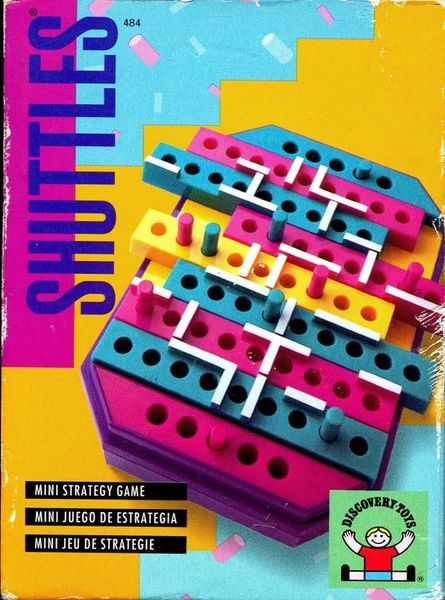Shuttles (1973) Board Game
Shuttles is a board game that was released in 1973 and designed by Philip Shoptaugh. It is a two-player game that falls under the categories of abstract strategy, maze, and racing games. The game involves network and route building as well as pattern recognition mechanics to achieve the objective of the game.
Game Components of Shuttles
- Game board
- Shuttle pieces
- Instruction manual
How To Setup Shuttles
- Place the game board on a flat surface.
- Each player selects their color of shuttle pieces.
- Shuffle and place the shuttle pieces on the starting spaces.
- Follow the instructions for the specific game mode being played.
Gameplay Mechanics and Game Objective
The objective of Shuttles is to move your shuttle pieces through the maze-like board and reach the opponent’s home row before they do the same. Players take turns moving their shuttle pieces according to the rules of the game mode being played, utilizing strategic thinking and pattern recognition to outmaneuver their opponent.
Player Experience
Pros:
- Quick gameplay with a runtime of around 20 minutes.
- Engaging strategy elements that keep players thinking ahead.
- Suitable for players aged 8 and up, making it a fun family game.
Cons:
- Limited replay value once players have mastered strategies.
- Components may feel dated compared to modern board games.
Personal Thoughts on Shuttles
Shuttles is a classic board game that offers a simple yet engaging gameplay experience. While the components may feel a bit dated compared to newer games, the strategic elements and quick gameplay make it worth considering for those looking for a quick and challenging two-player game. However, for those seeking more depth or variety in gameplay, there are alternatives available that offer a more modern gaming experience. Overall, Shuttles is a game worth trying for those interested in abstract strategy games, but may not be for everyone due to its simplicity and limited replay value.
Game Components of Shuttles
How To Setup Shuttles
To set up Shuttles, players start by placing their playing pieces on designated starting areas on the board. The game board sliders are positioned according to the initial configuration. Each player has a clear home area that they aim to move their pieces into.Gameplay Mechanics and Game Objective
Player Experience
Shuttles offers a fun and challenging experience, requiring strategic planning and quick thinking. Players must anticipate their opponent’s moves and adjust their strategy accordingly. The game promotes logical thinking and problem-solving skills.Pros
Cons
Personal Thoughts on Shuttles
Shuttles is an excellent game for those who enjoy strategic puzzles and competitive games. It is particularly suited for families, as it is simple enough for children to understand but challenging enough to keep adults engaged. The game’s portability and quick setup make it a great addition to any board game collection. However, it may not be the best choice for large groups or those seeking a game with varied gameplay mechanics.We are supported by our audience. When you purchase through links on our site, we may earn an affiliate commission, at no extra cost for you. Learn more.

